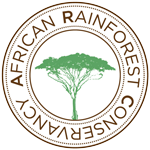We all know that the world is not a perfect place. Disease, famine, and national disasters can be found everywhere. And with all this death, degradation, and destruction comes all the people and organizations trying to “save the world.”
This is what typically happens: a specific problem is discovered, a solution is created, whether it is a new invention, medication, or something else, then a non-governmental organization (NGO) is created, and it gains support through donations. On the outside, this seems like a very efficient system, but in reality this NGO will most likely fail.
A great example of such an organization is PlayPump International. PlayPump was created around the following technology: a merry-go-round water pump that would provide clean water to communities in Sub-Saharan Africa every time a child used it. It seemed like the perfect idea! The pump cost USD $7,000 to install and it would provide clean water to 2,500 people. The selling of ads on the elevated water tank would pay for maintenance, and if the ads didn’t sell, they would place AIDS/HIV prevention campaigns on them. Soon donations came flooding in and they were able to expand quickly, but only two years later, pumps were found abandoned and damaged. Why did such a good idea fail after only two years?
Simple, they failed for the same reason many NGOs fail: they expanded too quickly. The problem with expanding too quickly is that it doesn’t give an NGO the time to realize the unintended consequences of introducing a major change into a community. Also, it does not take into account the fact that one solution may not work everywhere. We need to stop trying to “save the world” with fad ideas, and look at problems and solutions individually with the long-term in mind, not myopically.
At the African Rainforest Conservancy (ARC), we work directly with community members on a variety of projects to teach not only how to conserve the forests in the Eastern Arc Mountains, but also why this is important, and above all enable people to support themselves and their families through sustainable income activities.
For example, the ARC has had projects in the West Usamabara Mountains for the last 15 years that educate people on agroforestry, tree planting, and honey harvesting, which help villagers gain alternative employment to illegal logging and charcoal production. These projects differ from the work we do in other parts of the Eastern Arc, but they always focus on solving the environmental, social, and economical problems that the community faces. The people in the Eastern Arc are mostly very poor and depend heavily on the natural resources in these forests, environmental education and livelihoods assistance will reduce this dependency and help them leverage their own renewable natural resources.
Sources: Stop Trying to Save the World (New Republic)


Leave A Comment